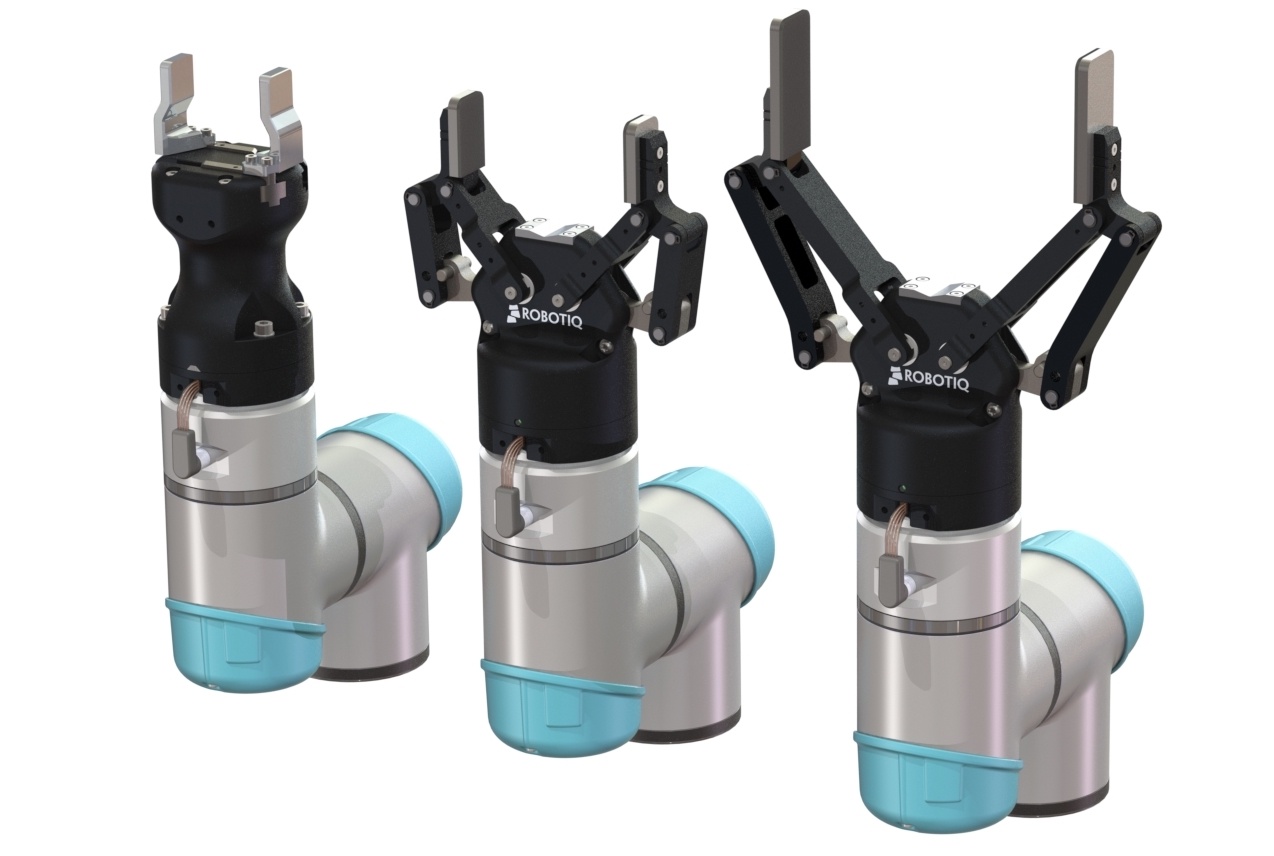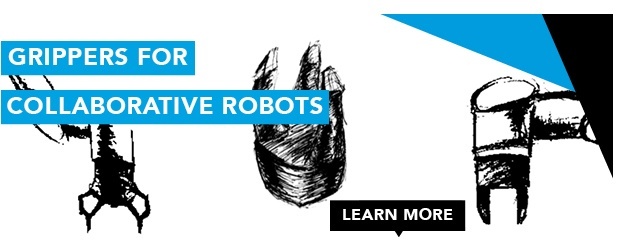The Simple Guide to Choosing Between So Many Grippers!

Posted on Jul 17, 2018 in Robot Grippers
5 min read time
Choosing a gripper is a challenging task. There are so many grippers on the market! Here are 5 steps to make the whole process simple.Without doubt, the gripper is the most important accessory for your robot. If you choose the wrong one, you may give yourself a whole load of problems. If you choose the right gripper, the integration will be easy and your robot will be up and running in no time.
Robotiq Adaptive Grippers all connect directly to Universal Robots Wrist
Why is the gripper so important? For many reasons, including:
- It is the part of the robot that interacts directly with the environment
- It determines the final payload of the robot.
- It limits the environmental conditions.
- It strongly influences the cycle time.
- It influences the integration time.
- It determines if the task is feasible or not.
Clearly, it is important to buy the right gripper!
The problem is that there are so many grippers on the market with a huge variety of divergent properties.
Hydraulic grippers, electric grippers, parallel grippers, angular grippers, adaptive grippers, rigid grippers… there are a lot of options! The challenge of selecting a gripper is so big that there have even been research studies which developed artificial intelligence solutions to select the best gripper, such as this one from Italian researchers or this one from German researchers.
Let's tackle this tricky topic head-on and return to the basics.
What is a gripper?
This might seem an absurdly basic question to ask. But, it's important. Some of the confusion with gripper selection comes when people mix up grippers with "end effectors."
An end effector is any attachment which fits to the robot's wrist, allowing it to interact with the task.
A gripper is a multi-purpose end effector which uses fingertips to grasp the workpiece.
Your question should now be…
Do I need a gripper or a different type of end effector?
The first decision you will have to make when purchasing a gripper is whether you need a gripper at all. Some tasks require other types of end effector.
For example, a welding task will probably require a welding tool, such as Snapweld's collaborative robot welding package. Similarly, a painting task would require a paint gun; a milling task would require a milling tool, an inspection task would require a sensor; etc.
Most robot tasks (particularly collaborative robot ones) do need a gripper, but not always.
5 steps to simplify gripper selection
Once you know that you definitely need a gripper then the fun can start! And by "fun" I mean the challenging task of selecting between all the different grippers on the market.
Thankfully, the task can be split up into five simple steps:
1. Clarify your task properties
Before you even think about opening up a gripper catalog, you should clarify the properties of your task. In particular, you will define the input and output of the robot cell. This includes the dimensions, weight and materials of the objects that the robot will be handling. These task properties will then determine which specifications are necessary in your gripper.
For a more detailed introduction to this process, download the Manual Task Map template and Robotic Task Mapping template from leanrobotics.org.
2. Determine the gripper's key specifications
Next, you should use the information you have gathered in the previous step to nail down the required specifications of the gripper.
The five most important specifications of a gripper are:
- Payload — determined by the maximum object weight in the task.
- Force — also determined by the weight.
- Stroke — determined by the object dimensions.
- Weight — determined by the payload of the robot.
- Energy source — determined by the setup and robot model.
Assign a number to each of these specifications. Depending on the needs of your task, you may also want to define other properties, such as: type, flexibility, IP rating, ease of integration, and communication protocol.
You can find out more about these properties in the eBook Grippers for Collaborative Robots.
3. Rank your specifications
Some specifications will be more important than others. Rank each of the specifications in order of importance. Note down which specifications are vital for your task and which are just "nice to have."
I find that there is a "magic number" of specifications when choosing a piece of technology. If I nail down too many specifications as "vital" then I limit my choice too much and there are too few suitable product options on the market. If I am vague about which specifications I need, there are too many options and I become overwhelmed.
4. Set your budget
How much are you willing to spend? This is important. Set an "ideal price" and also set a "no more than this" price. You will look for products within this range.
Also consider what Return on Investment (ROI) you would like. Think about what factors would allow you to improve the ROI of the gripper. For example, imagine you are trying to decide between a first gripper which was only suitable for one specific task and a second, more adaptive, gripper which is suitable for many tasks. The second gripper could have a better ROI because it would allow the robot to be used for more than one task. Your budget should always be weighed against ROI.
5. Investigate the market
Only after you have clarified all of the above points can you start to look at the available grippers on the market.
I suggest that you start narrowing down by energy source, if it makes sense for your application. Picking an electric gripper, for example, would allow you to knock out all pneumatic and hydraulic grippers in one move, which will help to reduce your options to a manageable level.
Where to learn more about robot grippers
There is, of course, much more information about grippers which you can learn to allow you to make a more informed decision. For the essential introduction to cobot grippers, make sure to download a copy of our eBook Grippers for Collaborative Robots.



.jpg)





Leave a comment